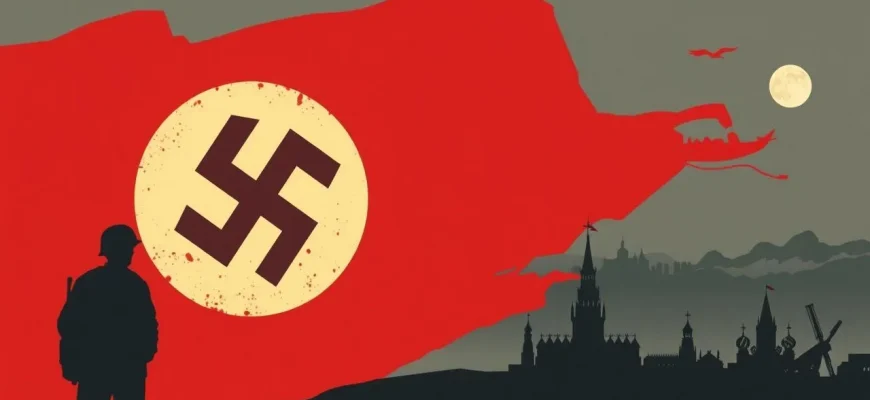The Soviet Union's cinematic portrayal of World War II and the fight against the Nazis is both profound and varied. These films not only depict the harsh realities of war but also celebrate the resilience and heroism of the Soviet people. This curated list of 10 Soviet films provides a window into the Soviet perspective on the Great Patriotic War, showcasing the bravery, sacrifice, and indomitable spirit of those who fought against fascism. Each film in this collection has been chosen for its historical significance, compelling storytelling, and its ability to resonate with audiences even today.
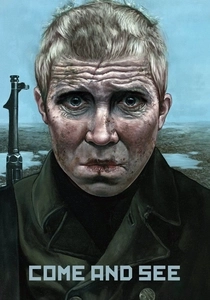
Come and See (1985)
Description: A harrowing depiction of the Nazi occupation of Belarus, this film follows a young boy who joins the partisans and witnesses the horrors of war, offering a raw, unfiltered look at the impact of fascism on civilians.
Fact: The film was shot in black and white to evoke the feel of documentary footage, and it's often cited for its intense realism and emotional impact.
 Watch Now
Watch Now 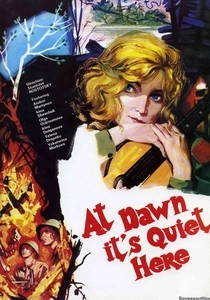
The Dawns Here Are Quiet (1972)
Description: This film tells the story of an all-female anti-aircraft unit in WWII, showcasing the bravery of Soviet women against the backdrop of the German invasion. It's a poignant look at the sacrifices made by ordinary citizens turned soldiers.
Fact: The film was based on a novel by Boris Vasilyev, and its title became a popular phrase in Soviet culture, symbolizing the calm before the storm of war.
 Watch Now
Watch Now 
The Battle of Stalingrad (1949)
Description: One of the earliest Soviet films about WWII, it provides a dramatic retelling of the pivotal battle, emphasizing the heroism of Soviet soldiers in turning the tide against the Nazis.
Fact: The film was made just a few years after the war, reflecting the immediate need to document and celebrate the victory.
 30 Days Free
30 Days Free 
The Cranes Are Flying (1957)
Description: While not directly about Nazis, this film captures the emotional turmoil of a woman whose fiancé goes missing during the war, reflecting the broader impact of the conflict on Soviet families.
Fact: It was one of the first Soviet films to win the Palme d'Or at the Cannes Film Festival, highlighting its universal appeal and artistic merit.
 30 Days Free
30 Days Free 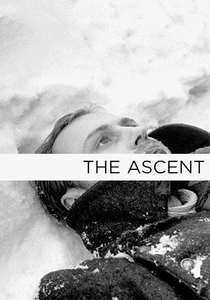
The Ascent (1977)
Description: Set during the German occupation of the Soviet Union, this film explores themes of betrayal, sacrifice, and redemption through the story of two partisans on a mission that goes tragically wrong.
Fact: Larisa Shepitko, the director, tragically died in a car accident shortly after the film's release, leaving behind a powerful legacy.
 30 Days Free
30 Days Free 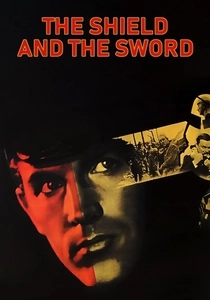
The Shield and the Sword (1968)
Description: This spy thriller follows a Soviet intelligence officer infiltrating Nazi Germany, showcasing the covert operations and espionage that played a crucial role in the war effort.
Fact: The film was so popular that it led to a sequel, and its theme song became a cultural phenomenon in the USSR.
 30 Days Free
30 Days Free 
Liberation (1972)
Description: Based on true events, this film depicts the defense of Stalingrad, focusing on the personal stories of soldiers and the harsh realities of urban warfare against the Nazis.
Fact: The film was shot on location in Stalingrad, now Volgograd, to capture the authenticity of the setting.
 30 Days Free
30 Days Free 
The Brest Fortress (2010)
Description: This film recounts the heroic defense of the Brest Fortress by Soviet troops at the onset of Operation Barbarossa, highlighting the initial resistance against the Nazi invasion.
Fact: The film was shot on location at the actual Brest Fortress, now a memorial site, to honor the defenders.
 30 Days Free
30 Days Free 
The Star (2002)
Description: A modern retelling of a WWII reconnaissance mission, this film captures the camaraderie and bravery of Soviet soldiers as they infiltrate enemy lines to gather crucial intelligence.
Fact: The film was well-received for its realistic portrayal of war and its focus on the human element of the conflict.
 30 Days Free
30 Days Free 
